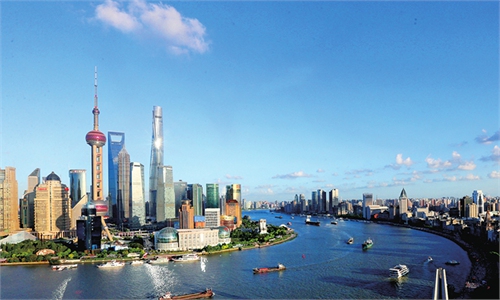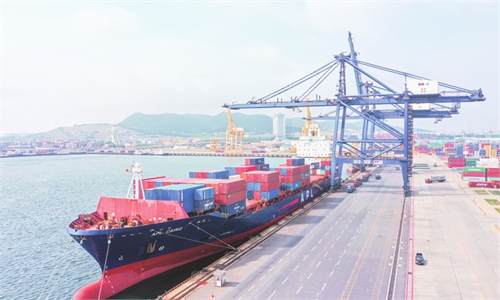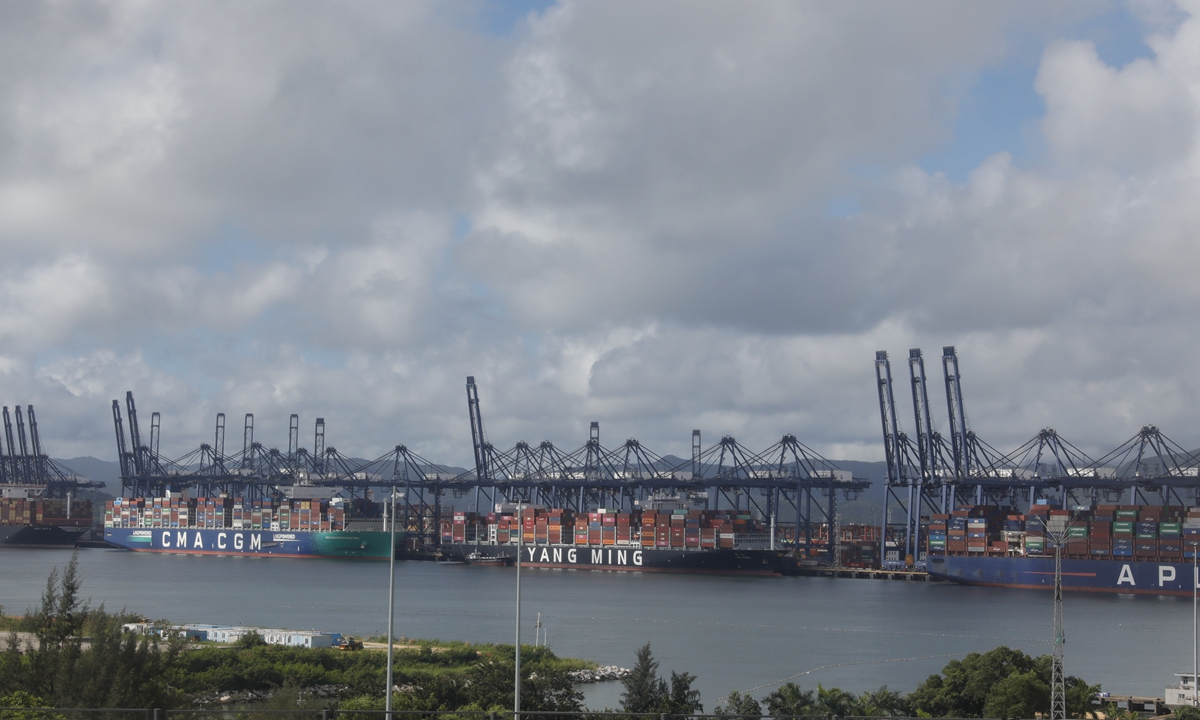
A view of the busy Yantian Port in Shenzhen, South China's Guangdong Province on July 10, 2022. In June, Shenzhen Yantian Port completed container throughput of 1.2606 million TEUs, a year-on-year increase of 104.71 percent, indicating a strong recovery in the country's high-end manufacturing base. Photo: cnsphoto
China's trade with trading partners from several multilateral platforms, including the BRICS, the Belt and Road Initiative (BRI) and the Regional Comprehensive Economic Partnership (RCEP), all saw significant growth in the first half of 2022, highlighting China's expanding network of trading partners despite so-called decoupling efforts by certain countries.
China's trade with the four other BRICS countries - Brazil, Russia, India and South Africa - recorded rapid growth in the first half of 2022, with an annual rise of 14.1 percent, which was 4.7 percentage points higher than the overall growth rate of China's trade in the same period, customs data showed on Wednesday.
In the first half of this year, China's trade with other BRICS countries accounted for 8.3 percent of China's total trade, up 0.2 percentage points from 2021 and 1.9 percentage points from 2009 when the first summit of the bloc was held, according to statistics released by the General Administration of Customs (GAC).
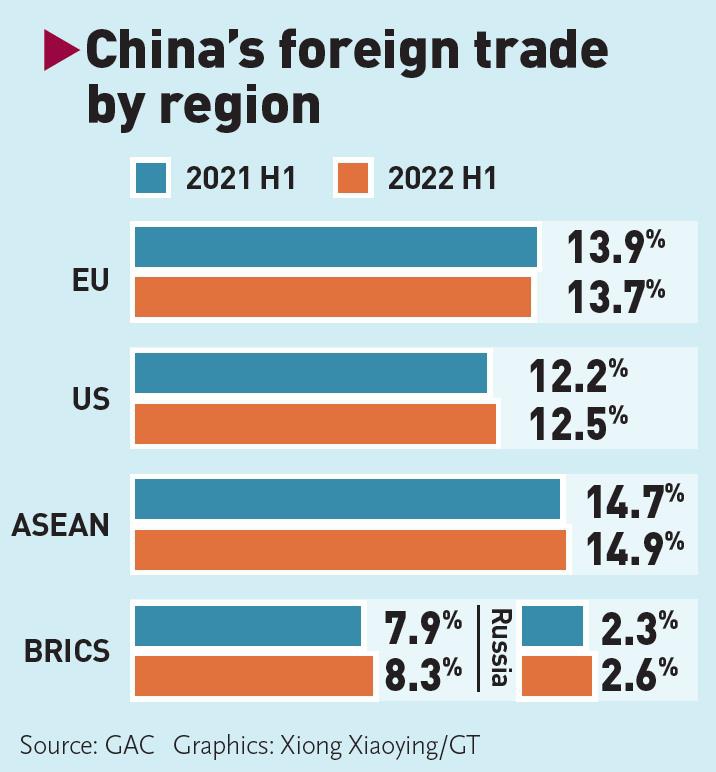
China's foreign trade by region 2021H1 VS 2022H1 Graphic: GT
Total trade between China and other BRICS countries stood at 1.64 trillion yuan ($244 billion), up 14.1 percent year-on-year. China's exports amounted to 817.18 billion yuan, up 20.6 percent, while imports totaled 825.82 billion yuan, up 8.3 percent.
Of all imports from other BRICS nations, crude oil, natural gas, coal and other energy products accounted for 36.2 percent, totaling 298.98 billion yuan, up 53.3 percent year-on-year. Imports of agricultural products accounted for 22.5 percent, having increased by 15.6 percent annually to 185.46 billion yuan.
China-Russia trade saw an annual increase of 27.2 percent in US dollar terms and China's imports from Russia increased by 48.2 percent. Trade between China and Russia amounted to $80.675 billion, GAC data showed.
China's trade with countries and regions along the BRI route also increased by 17.8 percent, while that with partners under the RCEP rose by 5.6 percent.
The GAC has signed protocols on quarantine requirements for corn from Myanmar, soybeans from Malawi, and corn and peanuts from Brazil. It will promote the import of high-quality agricultural products from RCEP members, a spokesperson of the GAC said on Wednesday.
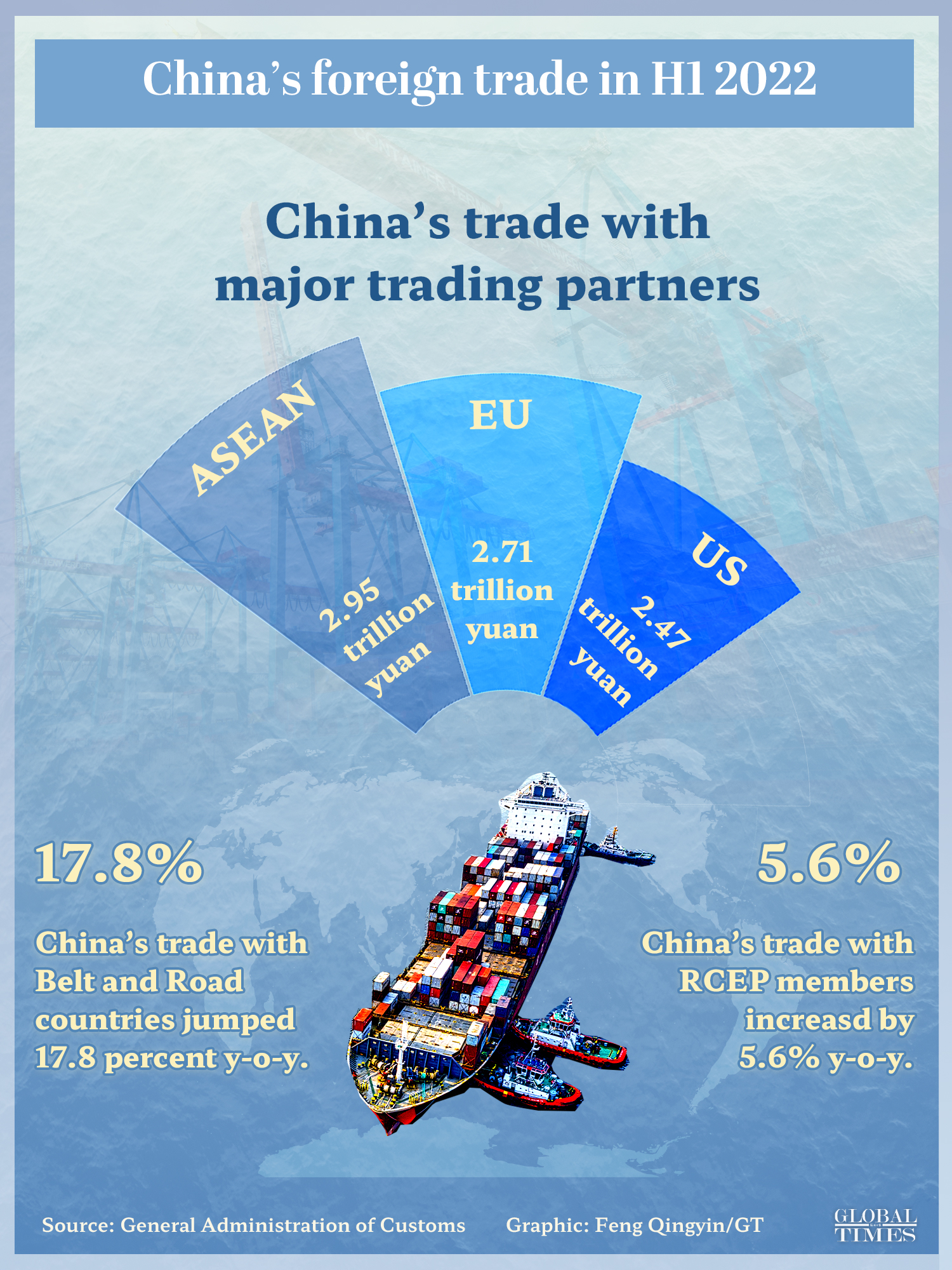
China's foreign trade in H1 2022 Graphic: Feng Qingyin/GT
China is the world's largest trader of goods. In terms of global industry and supply chains, China is one of the key nodes, which means that China has a very strong driving power for the development of global trade, Hu Qimu, chief research fellow at the Sinosteel Economic Research Institute, told the Global Times on Wednesday.
"In recent years, trade protectionism has been prevalent in the world. However, China, with an open mind, has been actively promoting multilateral cooperation frameworks such as the BRI and RCEP. This, together with China's dual circulation pattern, has enabled more countries to share the dividends of China's development and contributed to global economic growth and stability," said Hu.
Global Times

